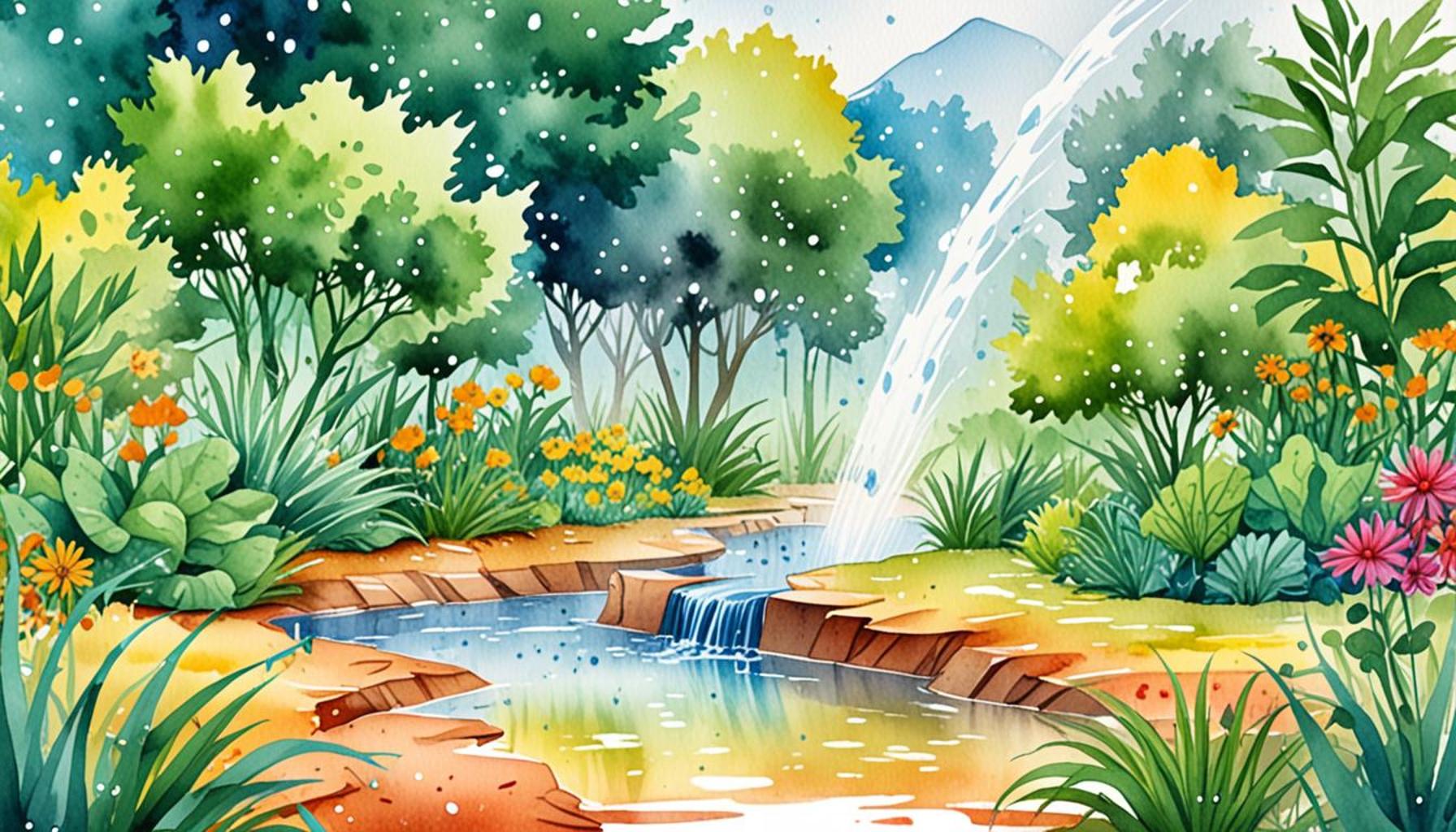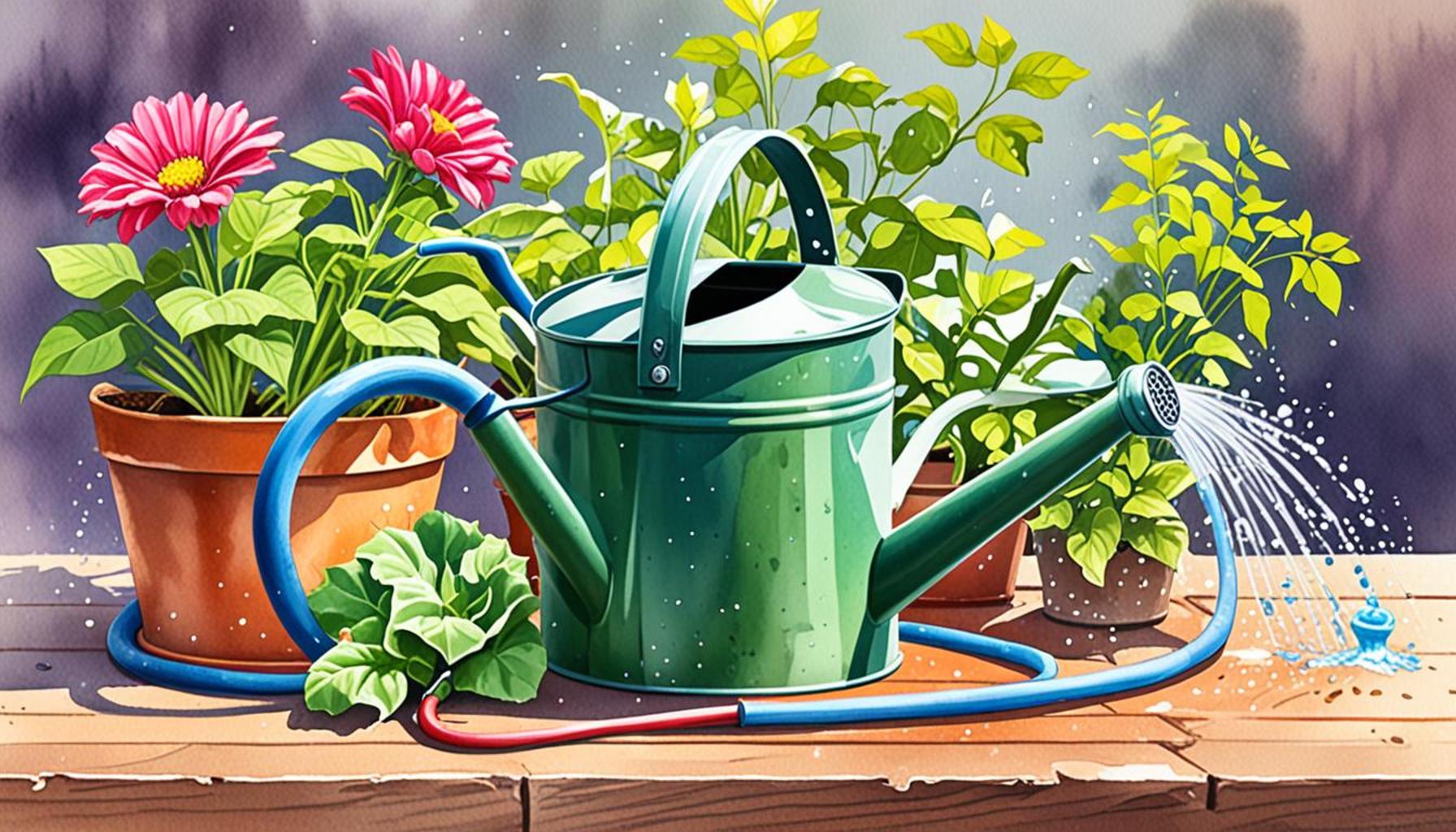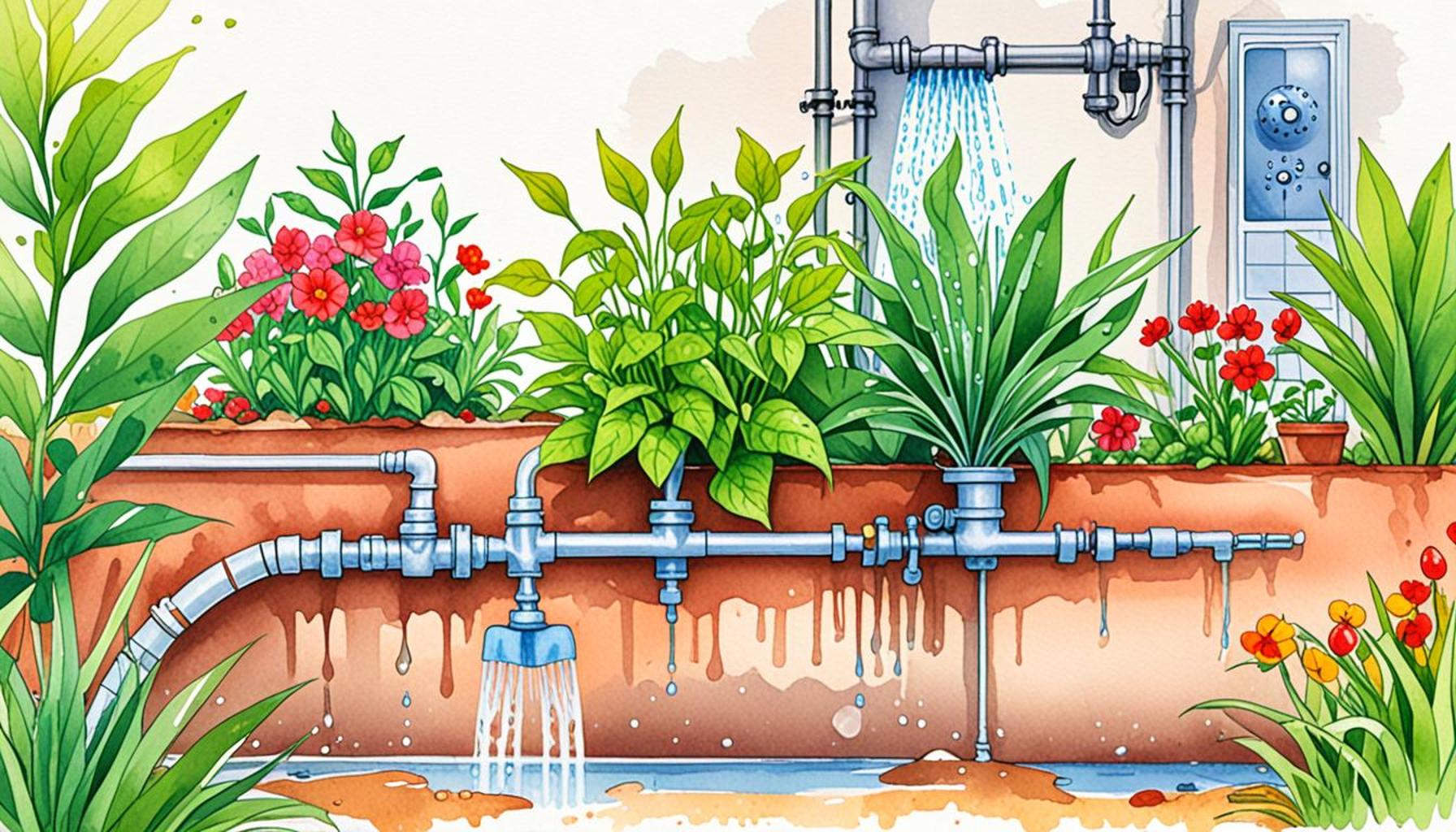Sprinkler Irrigation vs. Subsurface Irrigation: Pros and Cons for Beginners
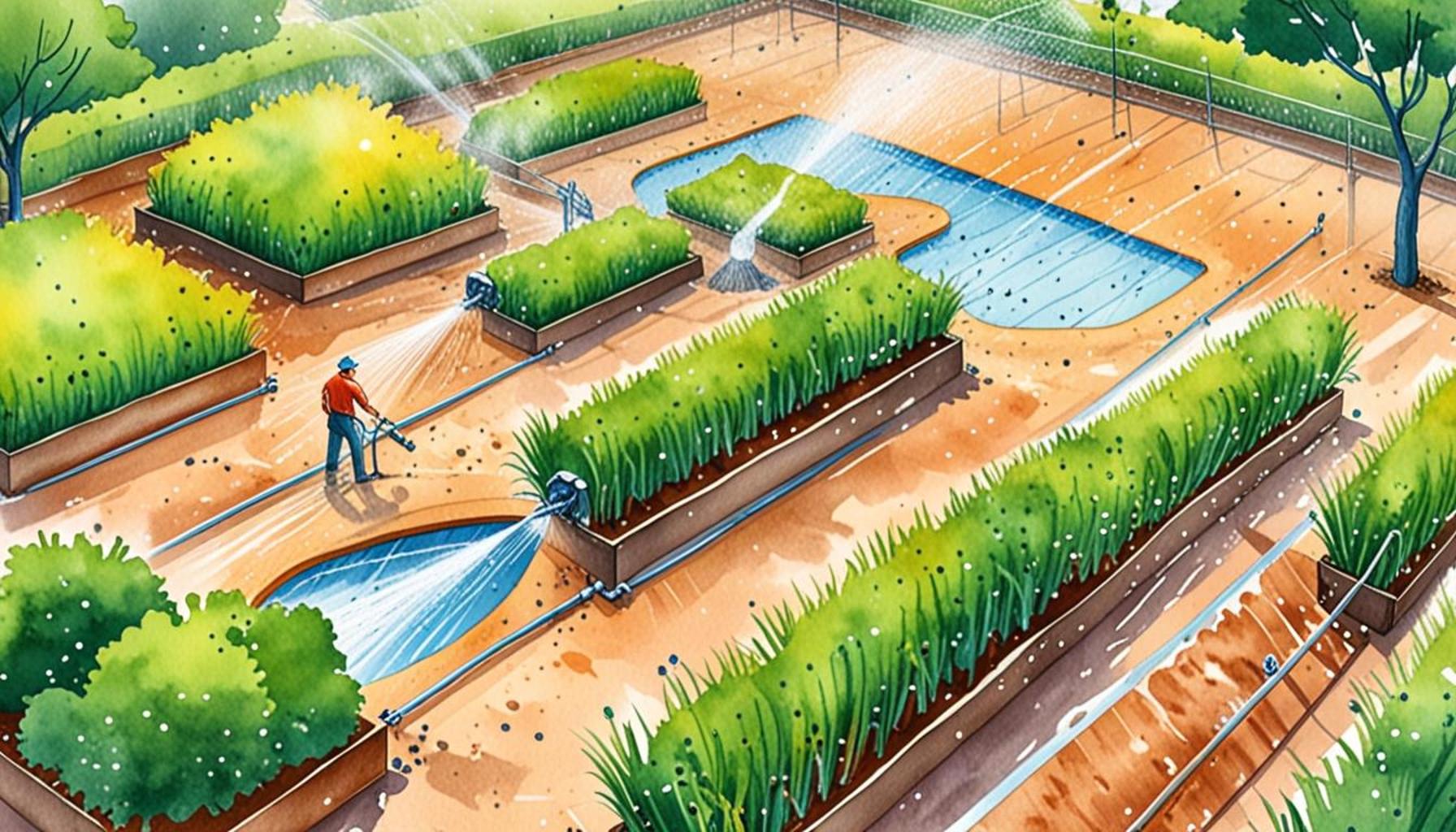
The Importance of Choosing the Right Irrigation System
Choosing the right irrigation system is crucial for effective gardening and farming. Among the various methods available, two popular options stand out: sprinkler irrigation and subsurface irrigation. Each method has its own attributes which can be aligned to suit specific agricultural needs, climates, and crops.
Sprinkler irrigation, which projects water onto plants from above through a network of pipes and sprinkler heads, is analogous to natural rainfall. It is often favored for its versatility, allowing for easy coverage of large areas, making it ideal for lawns, flower beds, and crop fields. The simpler installation process typically involves laying down pipes on the surface, which can be advantageous for novice gardeners or farmers looking for a cost-effective solution.
On the other hand, subsurface irrigation involves burying network pipes below the soil surface, delivering water directly to the root zone where it is most needed. This method is particularly advantageous in arid regions where water conservation is imperative. By minimizing evaporation losses, subsurface irrigation has demonstrated a marked improvement in water efficiency, often resulting in healthier plants with deeper root systems. For example, farms in California’s Central Valley have successfully implemented subsurface irrigation to address the ongoing challenges of water scarcity and to optimize crop yields.
Key Considerations
- Water Efficiency: Subsurface irrigation tends to reduce evaporation losses significantly, making it a sustainable choice in regions prone to drought. Studies have shown that this method can reduce water usage by up to 50% compared to traditional surface methods.
- Setup Costs: While sprinkler systems are often easier and cheaper to install—often requiring only basic tools for setup—subsurface systems might involve higher initial costs due to trenching and pipe installation. However, the long-term savings in water bills should be considered.
- Maintenance: Subsurface systems usually require less frequent maintenance since the components are not exposed to the elements as they are in sprinkler systems. This can lead to reduced labor costs and time.
By exploring these elements in detail, you gain insight into what works best based on your specific situation. For instance, if you are gardening in a temperate zone where rainfall is prevalent, a sprinkler system may suffice. Conversely, if you operate in a water-restricted area or are looking for efficiency, subsurface irrigation may be the superior choice.
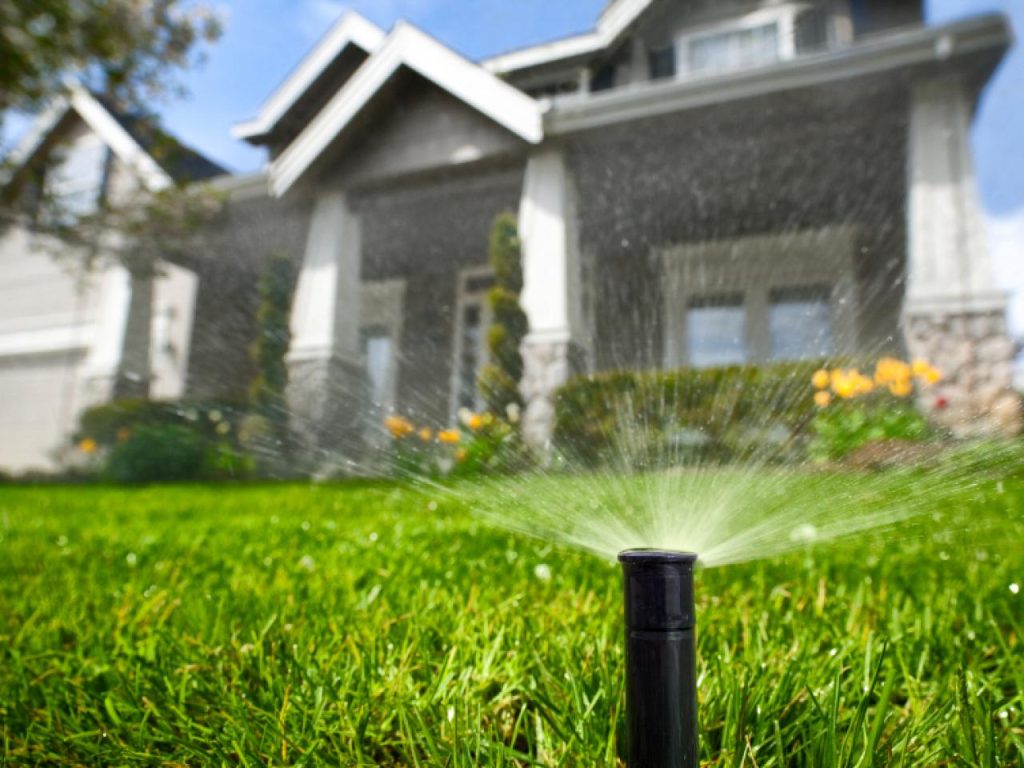
In the upcoming sections, we will delve deeper into both methods. With expert insights and real-world applications, you will be equipped to make informed decisions that enhance your planting success while ensuring wise water usage. Join us as we uncover the details of these transformative irrigation techniques!
DISCOVER MORE: Click here to learn about mulching techniques
Understanding Sprinkler Irrigation
Sprinkler irrigation is widely praised for its ease of use and adaptability. This irrigation method utilizes a system of pipes and multiple sprinkler heads to distribute water over crops, gardens, or lawns in a manner similar to natural rainfall. When considering sprinkler irrigation for your needs, it’s essential to recognize both its advantages and some potential drawbacks.
Advantages of Sprinkler Irrigation
- Efficiency and Coverage: Sprinkler systems can cover large areas, making them suitable for diverse applications, from home landscaping to extensive agricultural fields. With modern technology, these systems have adjustable heads that can vary the distance and angle of water application, enhancing coverage and reducing waste.
- Easy Installation: For new gardeners, the simplicity of setting up a basic sprinkler system is a major plus. Many systems are available as kits, which can be installed with minimal tools and technical expertise, allowing beginners to get started quickly.
- Flexibility: Sprinklers can be adjusted based on crop needs or weather conditions. They can also be easily moved or modified to adapt to changing plant layouts, making them versatile for seasonal changes.
Disadvantages of Sprinkler Irrigation
- Evaporation Loss: One of the significant challenges faced by sprinkler systems is water loss due to evaporation, especially during hot summer months. This is particularly relevant in drier states like Arizona and New Mexico, where proper scheduling and maintenance are crucial to minimize water waste.
- Water Distribution Issues: Uneven water distribution sometimes occurs, leading to overwatering in some areas while leaving other sections under-irrigated. This inconsistency can challenge plants’ health, requiring careful monitoring and adjustments.
- Frost Risk: Sprinklers can inadvertently create conditions conducive to frost formation if irrigation occurs late in the day. This can damage sensitive crops and plants in cold-weather regions, necessitating time management when watering.
Diving into Subsurface Irrigation
Conversely, subsurface irrigation offers a unique approach designed to deliver water directly to the plant roots, buried several inches below the surface. This method has garnered attention, particularly in regions where water conservation is critical. Exploring its benefits and drawbacks is essential for those considering this irrigation system.
Advantages of Subsurface Irrigation
- Enhanced Water Conservation: Subsurface irrigation limits evaporation and runoff. By focusing water delivery directly at the root zone, this method is particularly suited to drought-prone areas like parts of California and the Southwest.
- Healthier Plants: As moisture reaches plant roots rather than saturating the surface soil, plants develop deeper root systems. This resilience translates to healthier crops and greater drought resistance.
- Reduces Weeds: Since water is applied below the surface, the moisture encourages plant growth while minimizing the growth of competing weeds. This can lead to reduced herbicide use and promoting a more sustainable gardening approach.
Both sprinkler and subsurface irrigation bring unique benefits and challenges. Understanding these factors is key to determining the best fit for your gardening or farming needs. In the next sections, we will explore the intricacies of both systems, helping beginners make informed choices that suit their gardening ambitions.
Understanding Sprinkler Irrigation
Sprinkler irrigation is a widely used method that mimics natural rainfall by distributing water uniformly across the field through a system of pipes and sprinkler heads. This approach is particularly advantageous for beginners looking to establish a reliable watering system. One of the primary benefits of sprinkler irrigation is its flexibility; it can adapt to various crop types and field shapes. Additionally, it is easier to install, especially for small to medium-sized gardens, reducing the initial investment and labor involved. However, it’s important to consider some challenges. Sprinkler systems can be affected by wind and evaporation, leading to water loss and inefficient watering. Furthermore, they may not deliver water to the root zone effectively, which could necessitate supplemental irrigation methods during dry spells.
Exploring Subsurface Irrigation
On the other hand, subsurface irrigation offers a distinct approach that delivers water directly to the roots through buried pipes or tubes. This method can significantly enhance water efficiency by minimizing evaporation and runoff, making it a sustainable choice for areas suffering from drought. For beginners, the cleaning and maintenance of subsurface systems can pose unique challenges, yet the benefits are compelling. Subsurface irrigation generally leads to improved crop health, as the roots receive consistent moisture. This closed system also reduces weed growth, as less surface water can reduce the germination of weeds, promoting healthier plant growth. Nonetheless, initial installation costs may be higher, and it requires a more in-depth understanding of soil types and moisture levels, which might deter some novices.
Conclusion
As you explore these two irrigation methods, weighing their advantages and disadvantages will equip you with better decision-making skills regarding your irrigation needs. Understanding these systems helps in making informed choices that align with your gardening goals.
| Irrigation Method | Benefits & Features |
|---|---|
| Sprinkler Irrigation | Flexibility and ease of installation make it ideal for various crops. |
| Subsurface Irrigation | Enhances water efficiency and can improve crop health while reducing weed growth. |
Both systems have their place in modern agriculture, and understanding their differences equips you to choose the optimal solution for your unique situation. Whether opting for the ease of sprinkler systems or the efficiency of subsurface irrigation, being informed plays a crucial role in success.
DISCOVER MORE: Click here for essential soil tips
Analyzing the Drawbacks of Subsurface Irrigation
While subsurface irrigation has numerous advantages, it’s essential to weigh these against its potential challenges. This irrigation technique, though appealing in its efficiency and effectiveness, does come with specific drawbacks that beginners should consider before making a decision.
Disadvantages of Subsurface Irrigation
- Installation Complexity: Setting up a subsurface irrigation system can be more complicated and labor-intensive than installing a traditional sprinkler system. It typically requires excavation and precise placement of tubing, which may demand some technical know-how and additional equipment.
- High Initial Cost: The upfront expenses associated with subsurface irrigation can be significantly higher when compared to sprinkler systems. Costs can accumulate due to the need for specialized materials, installation, and maintenance tools. For new growers operating on a tight budget, this can pose a considerable barrier.
- Maintenance Challenges: Subsurface systems are at risk for clogging, particularly in areas with high mineral content in the water supply. Regular maintenance and checks are necessary to ensure the integrity of the system, which may be more challenging than monitoring above-ground systems.
- Limited Flexibility: Once installed, making adjustments to the layout or design of a subsurface irrigation system is more difficult. If crop rotations or landscaping styles change, this can necessitate significant labor and additional costs to modify the existing setup.
Comparative Analysis of Sprinkler and Subsurface Irrigation
When deciding between sprinkler irrigation and subsurface irrigation, it’s crucial for beginners to assess their specific needs, the environment in which they are working, and their available resources. An understanding of both systems can help tailor an approach that aligns well with agricultural goals.
Suitability for Different Crops
Different crops and gardening styles thrive under particular irrigation strategies. For instance, sprinkler irrigation is often favored for shallow-rooted plants such as annual vegetables and flowers, as the water reaches the surface rapidly. On the other hand, subsurface irrigation excels with deep-rooted crops like trees and perennial shrubs, allowing moisture to penetrate deeper into the soil.
Environmental Impact and Sustainability
With rising concerns about water scarcity and the environmental footprint of various agricultural practices, both systems present unique opportunities for sustainability. Sprinkler systems, while easier to install and manage, often lead to higher water use due to evaporation losses. Conversely, subsurface irrigation promotes water conservation effectively, yet poses the challenge of higher initial costs. It’s vital to evaluate these aspects according to local climate, soil conditions, and water availability.
In summary, both sprinkler irrigation and subsurface irrigation offer viable solutions for watering plants but cater to different needs and skill levels. Understanding these systems’ mechanics, costs, and impacts will empower beginners to make informed decisions tailored to their gardening and farming ambitions, ensuring they cultivate a flourishing green space while conserving essential resources.
DISCOVER MORE: Click here for tips on using watering cans and hoses effectively
Conclusion: Making the Right Choice in Irrigation
In the realm of gardening and agriculture, the decision between sprinkler irrigation and subsurface irrigation is not one to be taken lightly. Each system comes bearing distinct characteristics, advantages, and challenges that cater to varying needs, resource availability, and agricultural goals. For beginners, sprinkler irrigation offers an accessible and straightforward approach, making it an excellent entry point for those looking to maintain a garden or small-scale farm. Its ease of setup and maintenance coupled with the ability to quickly water a variety of plants can be quite appealing.
Conversely, those inclined towards long-term sustainability and efficient water usage may find subsurface irrigation a worthy investment. This method is particularly beneficial for deep-rooted crops and reduces water loss due to evaporation. However, it’s crucial to recognize the initial complexities and costs associated with its implementation, as these can pose significant hurdles for novice gardeners.
Ultimately, choosing the right irrigation method hinges on a thorough understanding of one’s specific needs, environmental conditions, and resources. For aspiring gardeners and farmers in the United States, knowing the regional climate and crop types can further guide this decision. As you embark on your irrigation journey, educate yourself, consider your options, and tailor your approach to cultivate a thriving ecosystem that mirrors your unique intentions and aspirations.
